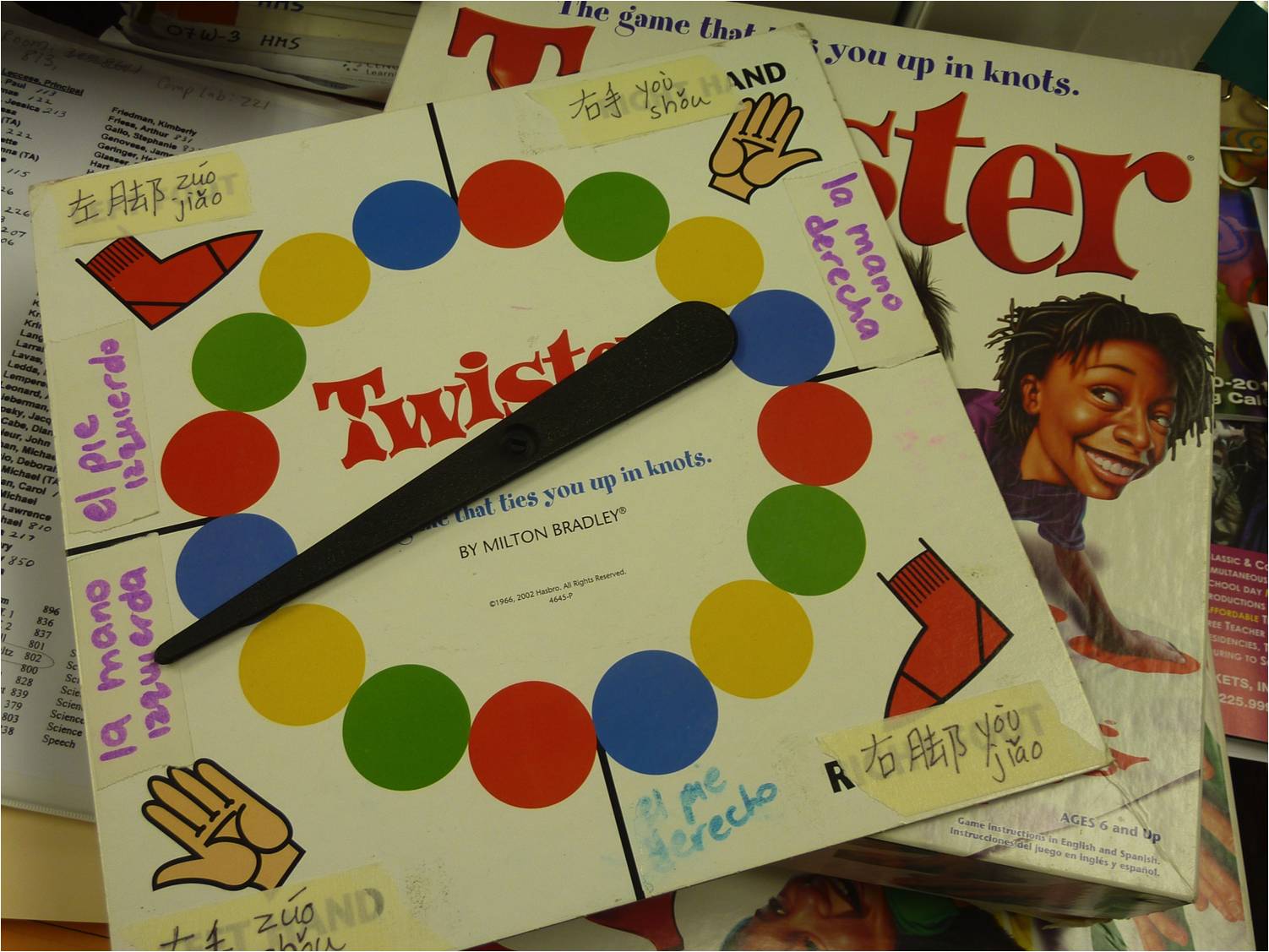|
|

|
|
All Work and No Play?
The Imperative of Play in the Language Classroom
Play is crucial in the language learning process. Games and fun activities help students feel excited on the affective level, while also reinforcing language acquisition on the cognitive and developmental level. In his book A Whole New Mind, author Daniel Pink posits six human abilities that are essentials for success in the 21st Century. Among them is play, with games, humor and joyfulness being key elements. One sign of a strong language learner is the ability to play with language and understand humor in that language. Below are some ideas for incorporating fun and playful (yet rigorous and effective) activities into existing World Language and EAL curricula.
|
PowerPoint presentation: "All Work and No Play: The Imperative of Play in the Language Classroom"
Ways to Play in the Language Classroom
- Create an avatar: Students can often be hesitatant to speak in the beginning stages of proficiency development. Allowing students to create an avatar can provide them with the safety to express themselves behind their digital alter ego. These sites allow students to choose their identity, record their voices, and present their avatar to the teacher or class, or embed it onto a class blog or wiki.
- Make a cartoon or comic: After reading or listening to a story or information in the target language, students can demonstrate their comprehension via visuals, storyboards, cartoons or comics. There are many online comic generators available that allow students to create beautiful projects with text, image, and some even include voice. Most platforms include pre-drawn characters so those students who feel less than artistic can join in the fun as well.
- Take a Fantasy Trip: Student travel is always a source of inspiration and learning. Since we can't always take our students out of the classroom, fantasy trips are an excellent way to get kids thinking about culture and using the language for real-world purposes. Included in this collection of materials are passport templates, student handouts, rubrics, lesson plans, activities and more! Read an article about a fantasy trip to the Colombian coast, and view a PowerPoint presentation with tips and tricks to help you take your own fantasy trip.
- Dive into Folktales and Stories: Students are naturally primed to enjoy stories. Explore the use of folktales, myths, and other traditional tales in the language classroom. Stories from the target culture can provide students with a natural and enjoyable link to the morals, dreams, peoples and traditions of that culture. They can also serve as the thematic center to a curriculum unit on a variety of interdisciplinary topics, including science, social studies, art, and music. Access a PowerPoint presentation in which you can learn the rationale for the use of folktales, and discover links to online materials, activities, lessons and sample thematic units that incorporate folktales.
- Act out Role Plays and Simulations: Have students take on the role of a famous artist, historical figure, or even modern day singer or actor, and set up a scene in which they have to communicate as their character. Role play and simulation is different from a traditional "skit." Students are not scripted and they must to some background research to get into their role. Watch this video lesson with an example of a High School Spanish class simulation called "The Politics of Art."
- Experiment with Science and STEAM: Experimentation with science can involve prediction, suspense, and surprise - all of which can be fun and exciting! Teach vocabulary and grammar through STEAM (Science, Technology, Engineering, Arts, and Math) concepts and watch students make connections while exploring these fields in fun and interesting ways.
Online Games for Language Learning
- Literacy Center Play and Learn: The Play and Learn games are part of an integrated approach to learning that includes playing games, making objects, reading words, coloring and practicing writing. Together, they meet several of the Common Core State Standards (CCSS) and are designed to support young children as they learn basic skills. The games include subject-based “learning loops” and the games are progressively more difficult.
- Juegos del Mundo: An interesting site in Spanish, English and Catalan; a collection of descriptions of how to play typical street games from around the world; you can click on a region of the world and read details about games from that region.
- Languages Online: Fantastic series of well-organized and leveled lessons, games, songs, and other teaching/learning materials for Chinese, ESL, French, Italian, German, Indonesian, Macedonian, Spanish and Turkish.
- Digital Dialects: This fun website features "free to use interactive games for learning languages. Language sections are updated regularly and new sections are under development (requires Macromedia Flash Player)." Games include practice for themese and topics such as food, colors, numbers, clothing, animals, greetings, and more. There are over 55 languages available
- Climantica: A fun interactive game about the environment – available in Spanish and Galician, and Honoloko: "Very similar to the real world, on Honoloko your actions really make a difference to your surroundings." A super cute game in which your avatar walks around Honoloko Island answering questions and making choices about the environment. Available in 26 languages!
- Free Rice: A great way to talk about human rights/hunger issues with students - while also changing the world! Students take interactive quizzes about vocabulary in French, German, Italian and Spanish (as well as English). For every answer they get right, they get a harder question next and 10 grains of rice are donated to the United Nations World Food Program. Fun with a purpose!
|